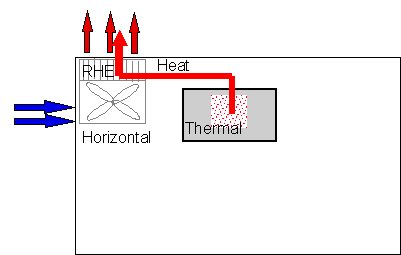Mobile CPU Mania
Heat Pipes, Heat Sinks, Heat Spreaders And Remote Heat Exchange, Continued
The ambient temperature is about 25°C and the body temperature is 37°C. When the heat sink gets about 40°C you will not be disturbed and the thermal envelop improved 15°C. Removing 15°C would require a very big fan with it's power consumption and noise.
The next thing with such a big heat spreader is to get the heat of the CPU that is only at one small spot inside of the notebook across the whole heat spreader.
First, get a thermal attach material between the CPU and a small heat sink. Attached to the heat sink is a heat pipe that transfers the heat away from the heat sink across the heat spreader.
There are many designs for heat pipes available. One Version uses a semi-hollow metal pipe that contains water. The phase changing mechanism of water provides an efficient way of transporting heat from the heat sink across the heat spreader or to a Remote Heat Exchange.
A Remote Heat Exchange is a finned structure for the maximum surface and an adjacent fan that forces ambient air through the system and the RHE (Remote Heat Exchange).
If the case of a notebook is made out of a magnesium alloy, then this case can be used as a heat spreader too.
Get Tom's Hardware's best news and in-depth reviews, straight to your inbox.
Current page: Heat Pipes, Heat Sinks, Heat Spreaders And Remote Heat Exchange, Continued
Prev Page Cooling A Mobile CPU Next Page Desktop Vs. Mobile CPU